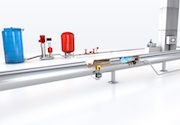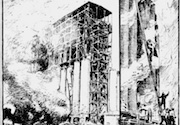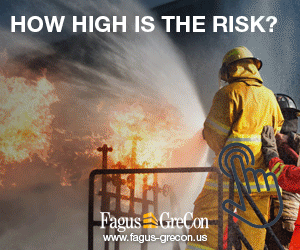| |
| |
 |
 |
| |
 |
|
@{mv_date_MMM d, yyyy}@ |
|
| |
 Biomass Engineering & Equipment's Joel E. Dulin shares practical advice on conveyor explosion venting.
» Read more...
Biomass Engineering & Equipment's Joel E. Dulin shares practical advice on conveyor explosion venting.
» Read more...
Jeramy Slaunwhite with Rembe explains the what, why, when, where and how of dust hazard analysis in facilities that deal with combustible particulate.
» Read more...
WPAC, BC Forest Safety Council and Dalhousie University recently partnered on an initiative to improve pellet industry practices regarding equipment isolation with an eye on minimizing the impact of potential combustible dust fires, explosions and deflagrations within wood pellet plants.
» Read more...
|
| |
 |
 |
| |
|
| |

The presence of dust, wood chips, particles, and debris in a work environment can significantly raise risks to life and property. NFPA 664, Standard for the Prevention of Fires and Explosions in Wood Processing and Woodworking Facilities, 2020 edition offers comprehensive criteria for designing, operating, and better protecting facilities that process wood or manufacture wood products.
The 2020 edition of the standard offers the latest requirements for specialized dust hazard mitigation. NFPA 664 and other codes and standards on dust control for risk prevention delivers support to those charged with protecting facilities. Find them all at Annex Bookstore.
» Place your order for the 2020 edition today. |
| |
|
| |
 Fagus GreCon's Tom Burniston shares an overview of field-proven automated fire prevention solutions to help protect people, premises and enable uninterrupted process and production in the wood pellet industry.
» Learn more...
Fagus GreCon's Tom Burniston shares an overview of field-proven automated fire prevention solutions to help protect people, premises and enable uninterrupted process and production in the wood pellet industry.
» Learn more... |
| |
 Rose Keefe with DustEx Research shares the story of the Murray Grain Elevator explosion. “… the events that led up to the disaster continue to replicate themselves today, and not just in the grain handling industry. Every year several people are injured and even killed in explosions at sawmills, pellet production plants, and woodworking facilities, and if lessons aren't learned, more lives and livelihoods are likely to be lost.”
» Learn more...
Rose Keefe with DustEx Research shares the story of the Murray Grain Elevator explosion. “… the events that led up to the disaster continue to replicate themselves today, and not just in the grain handling industry. Every year several people are injured and even killed in explosions at sawmills, pellet production plants, and woodworking facilities, and if lessons aren't learned, more lives and livelihoods are likely to be lost.”
» Learn more... |
| |
 |
 |
| |
|
| |
The VETS Group's Francis Petit and Erin Rayner outline strategies for creating a clear and efficient pathway for fire and possible subsequent deflagration to exit a building in the safest, most direct path possible.
» Read more...
|
Fike’s Brian Edwards answers some of the most common questions received by their team about dust hazard analysis and what it means for the biomass industry.
» Read more...
|
|
David Murray with The Gorman Group shares ways to prevent combustible dust complacency in the face of competing risk priorities.
» Read more...
| | |
|
| |

|
| |
| |











